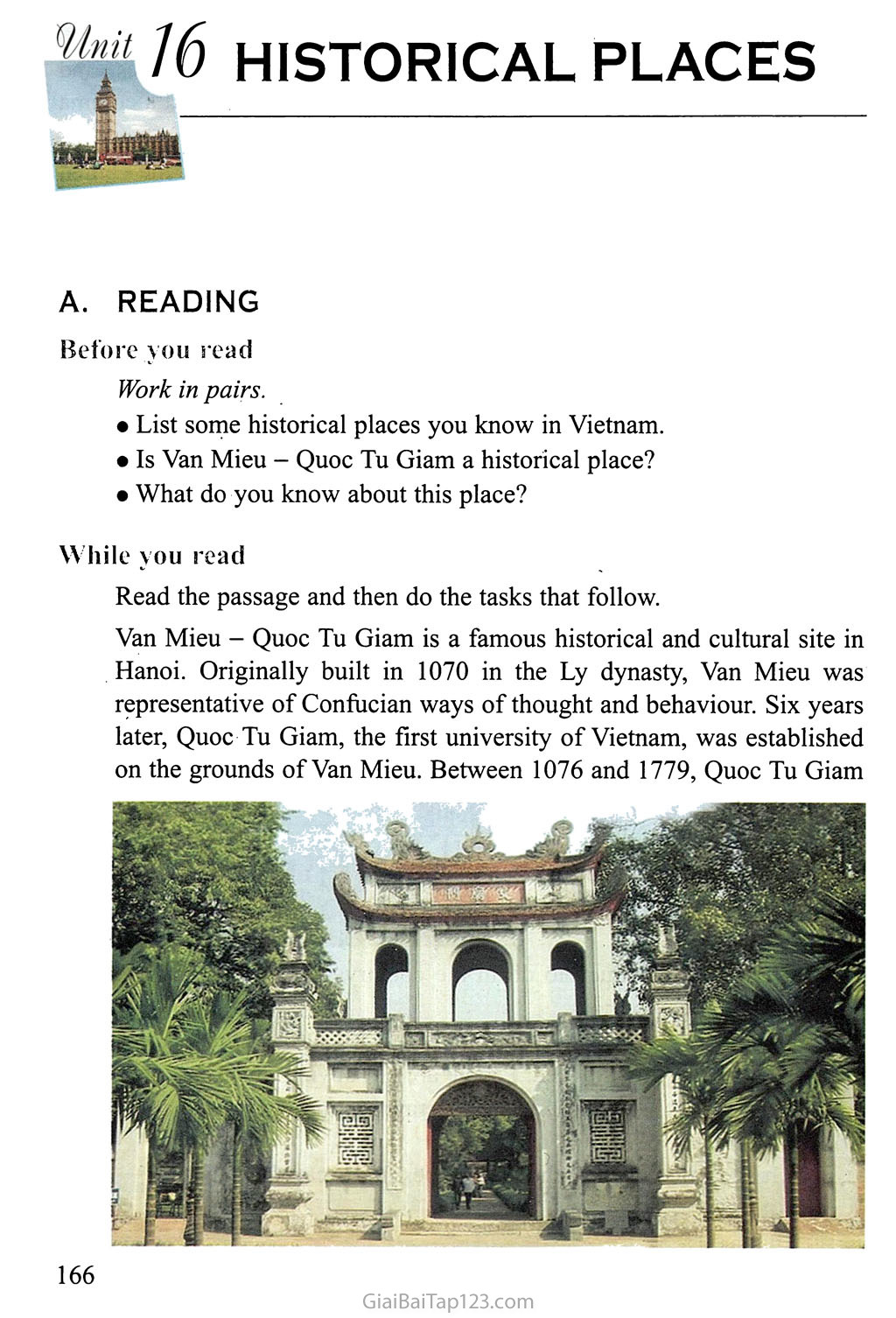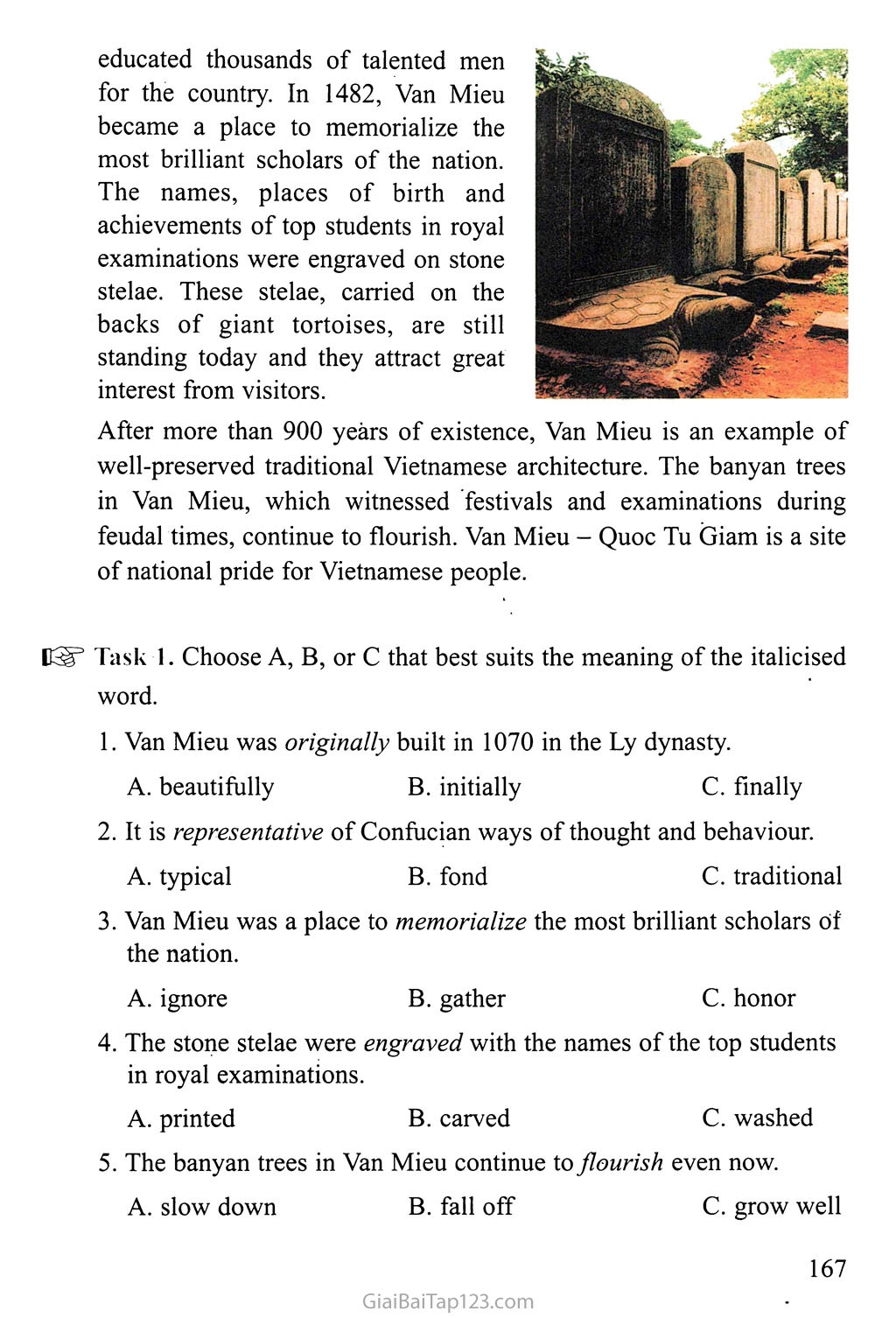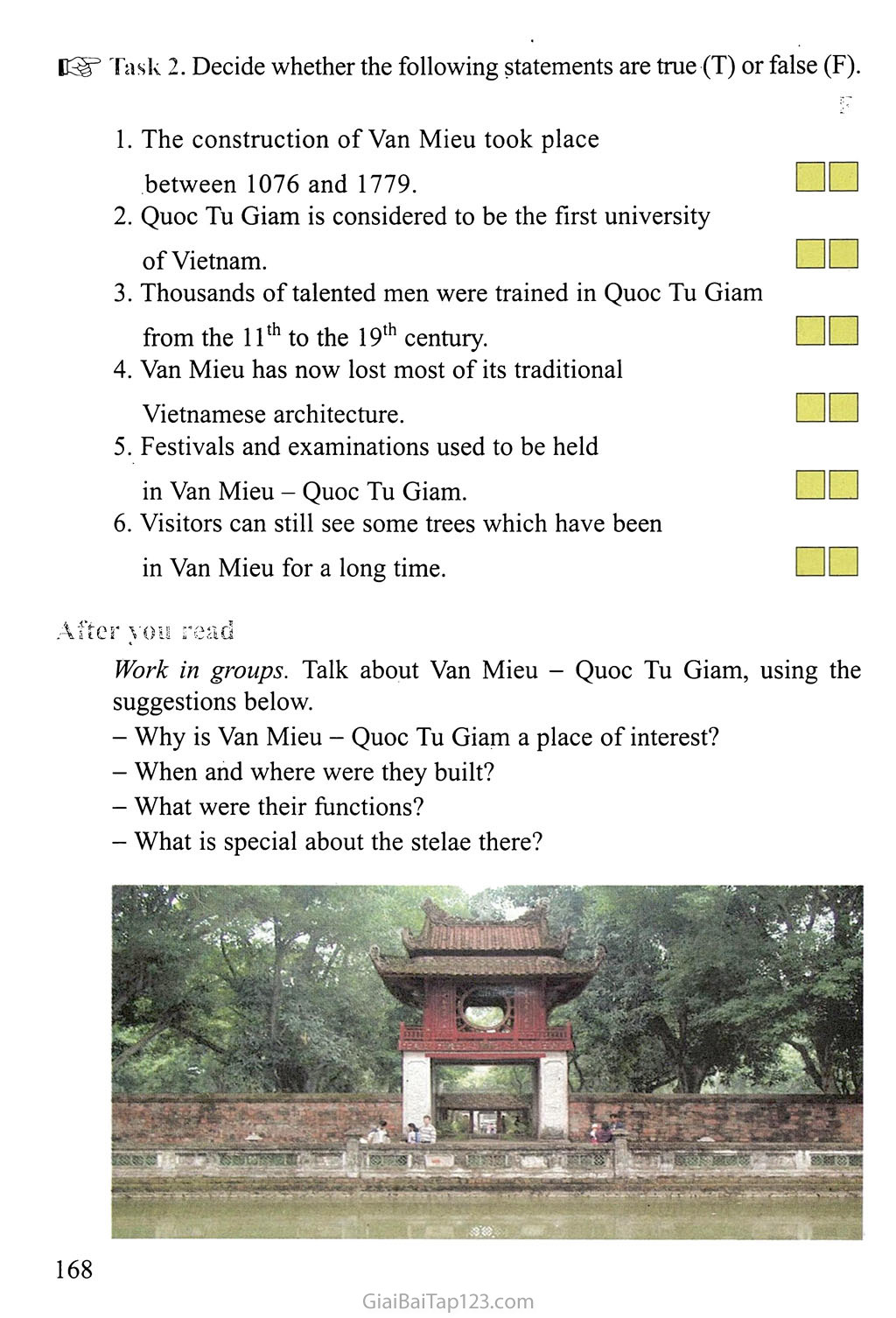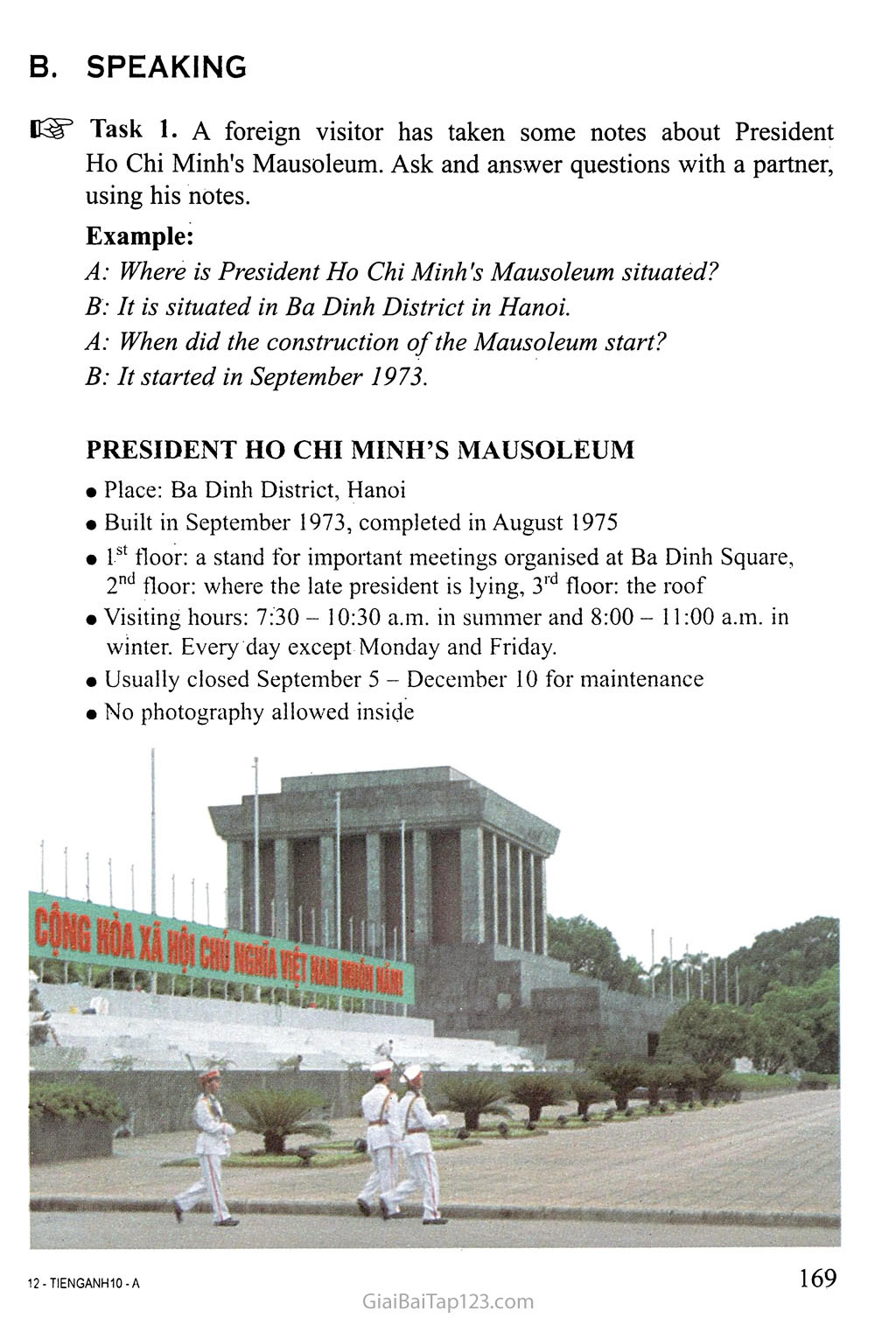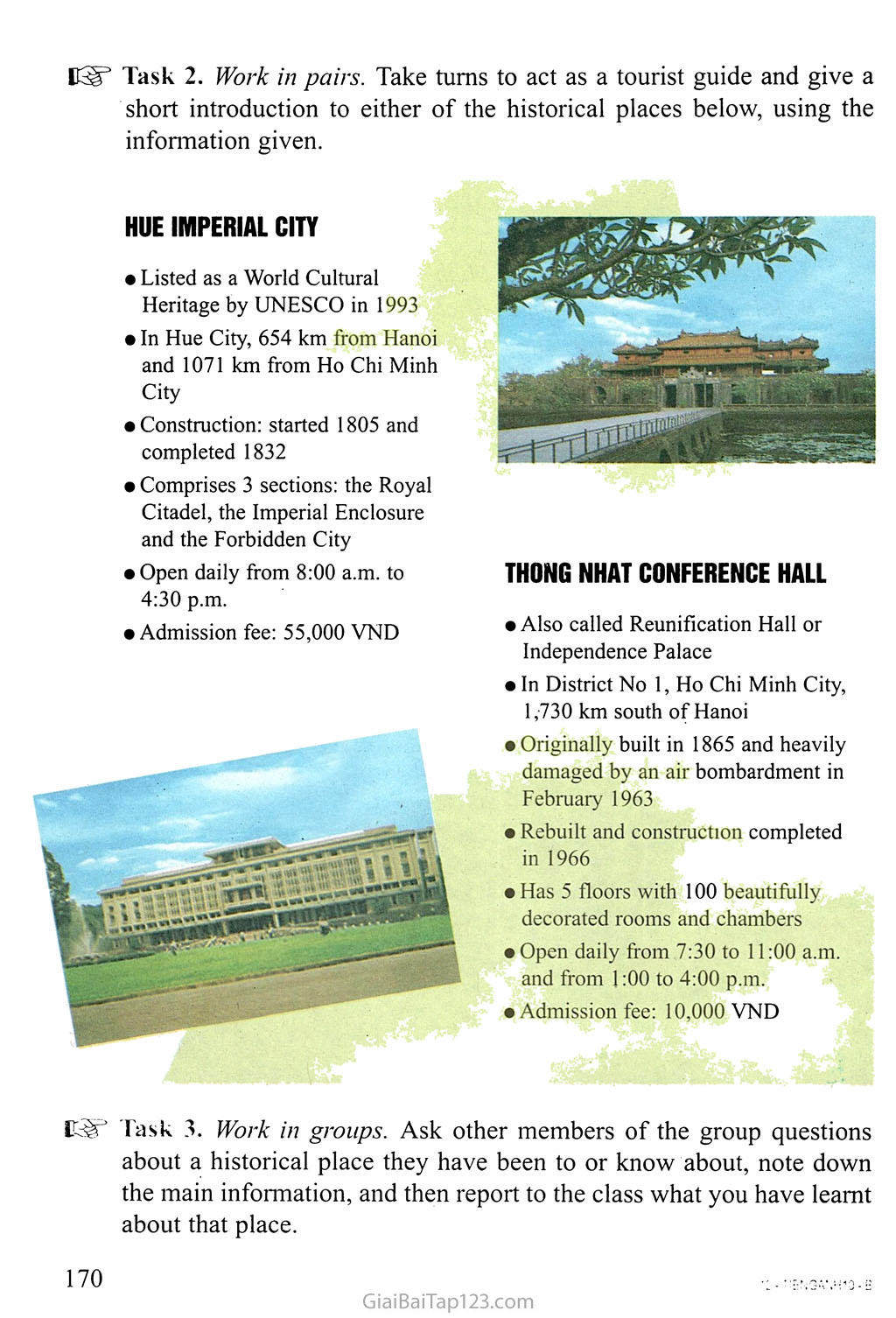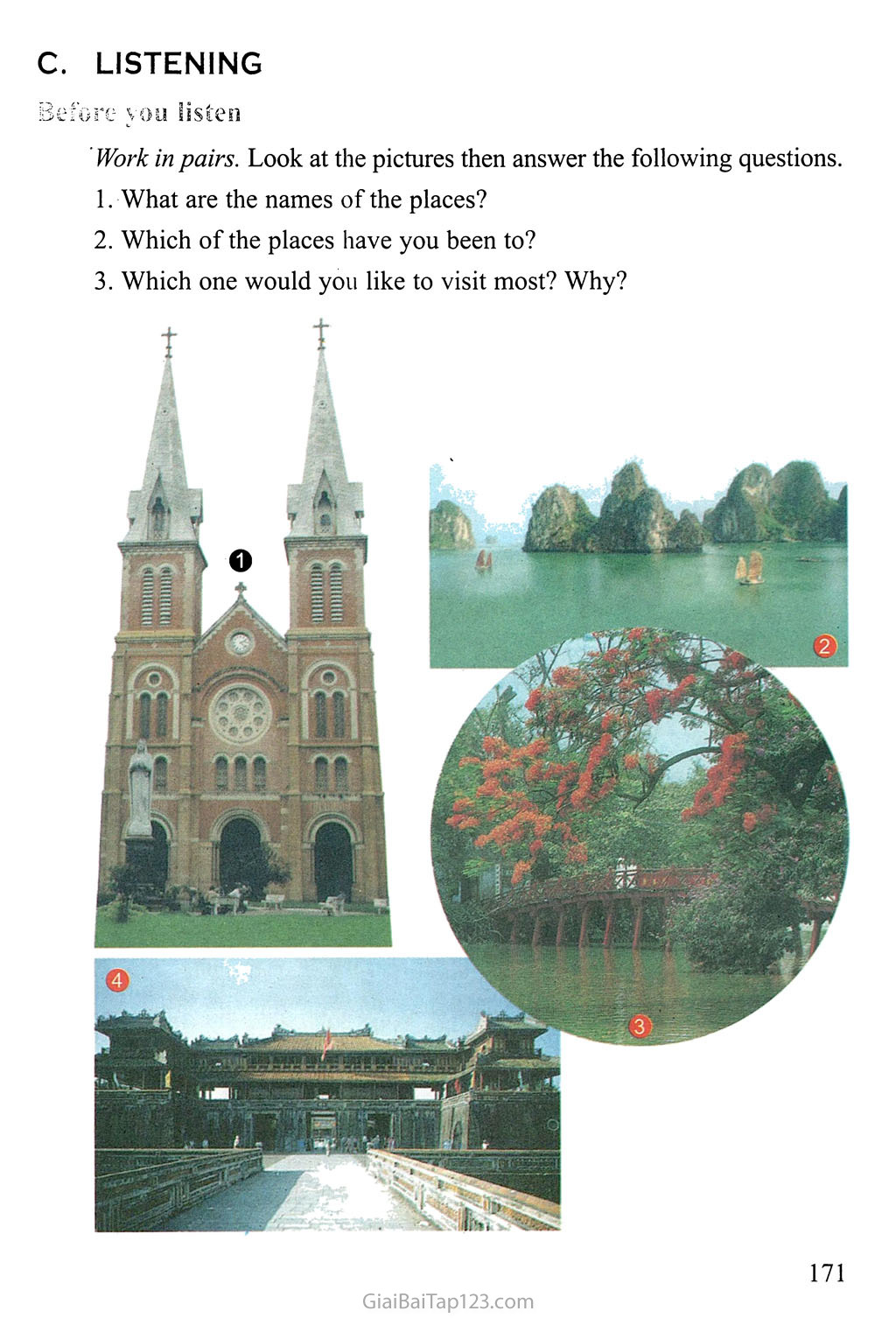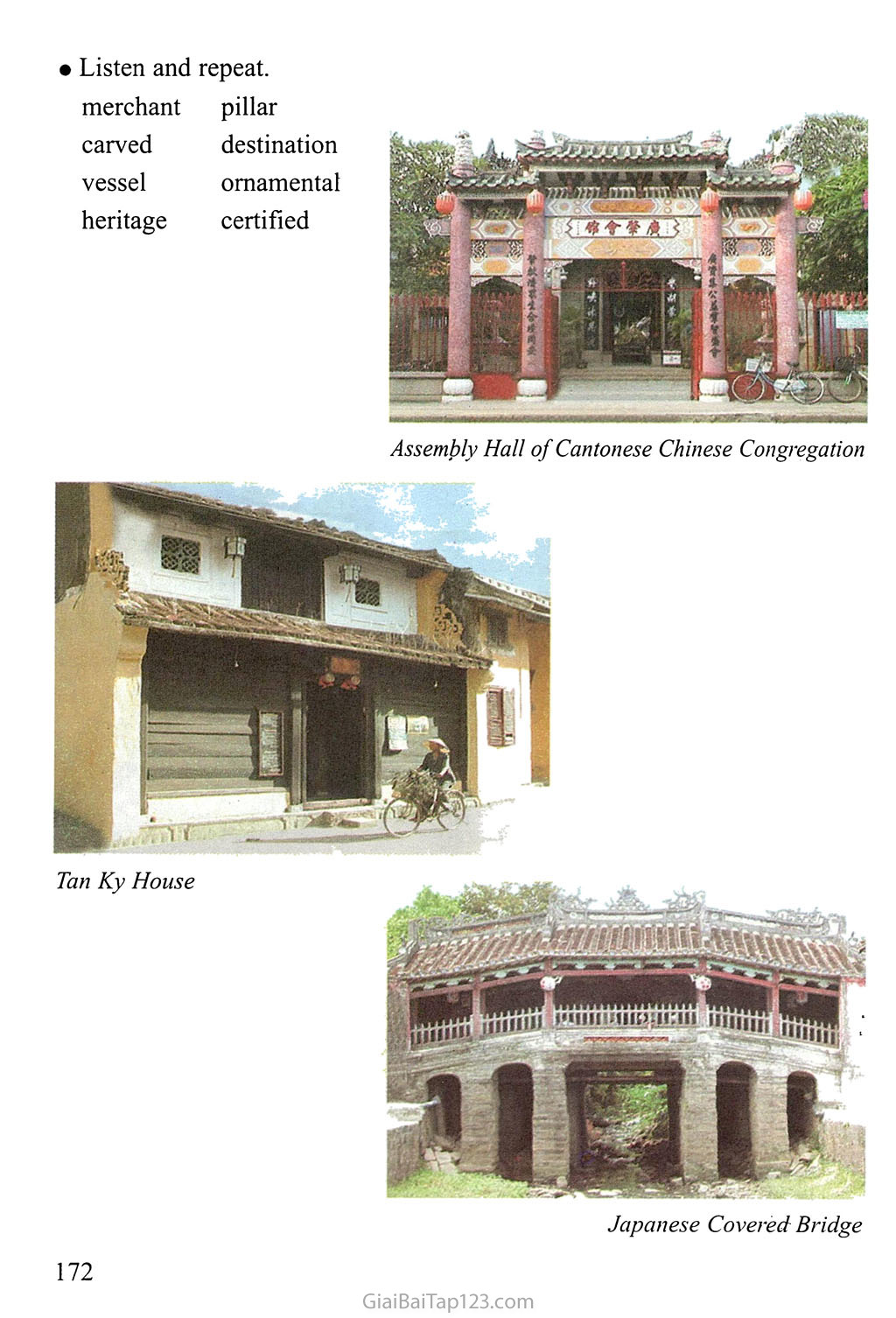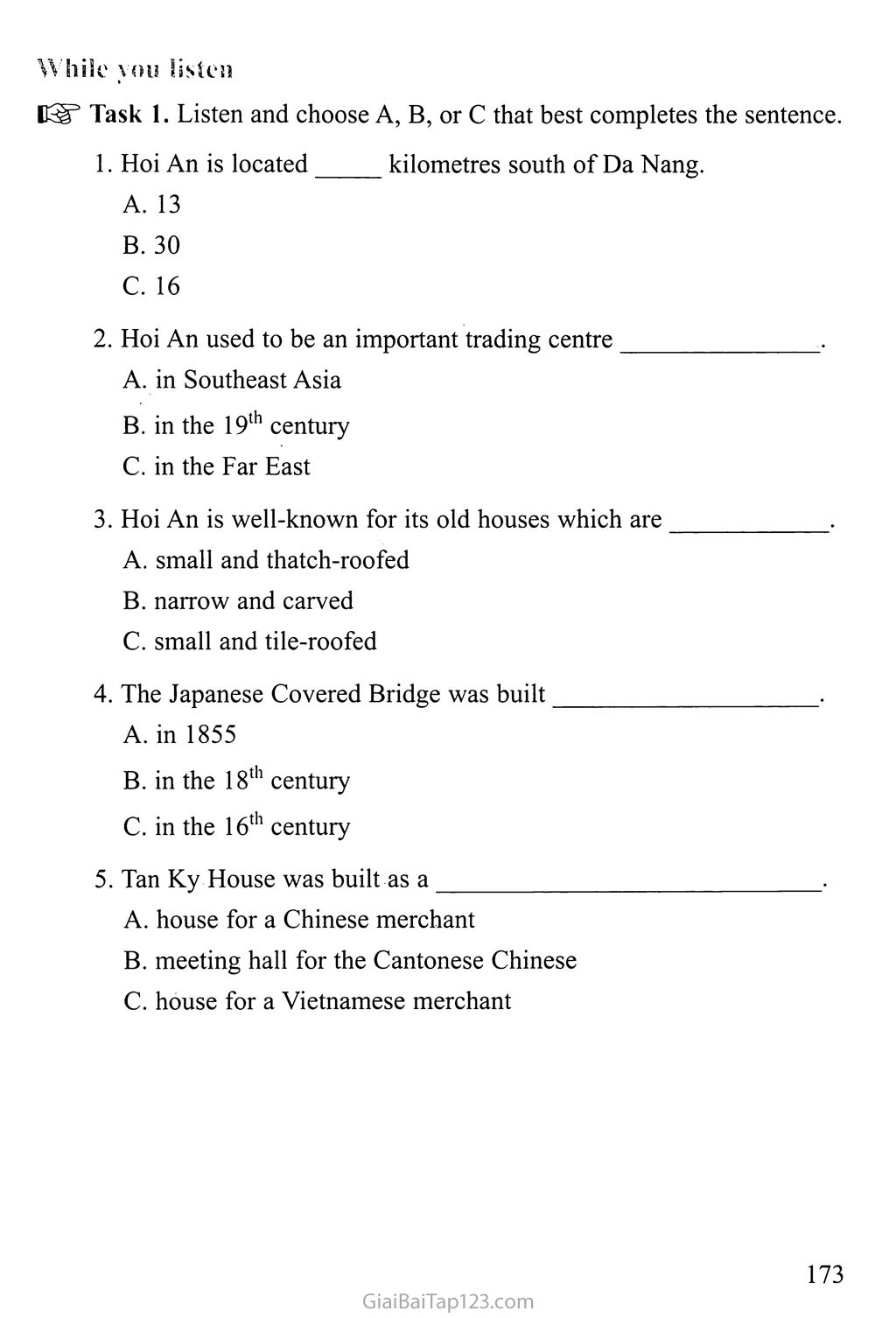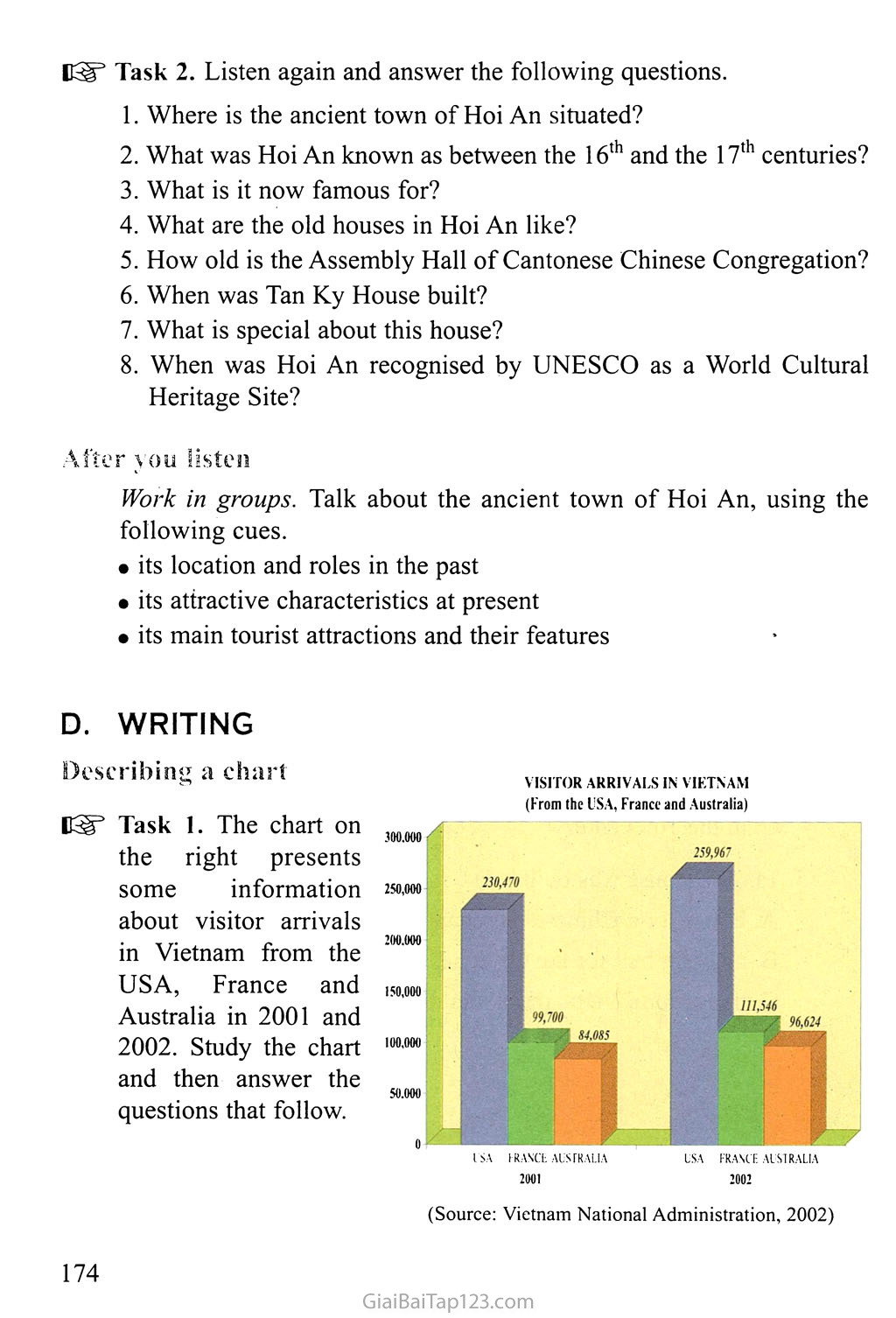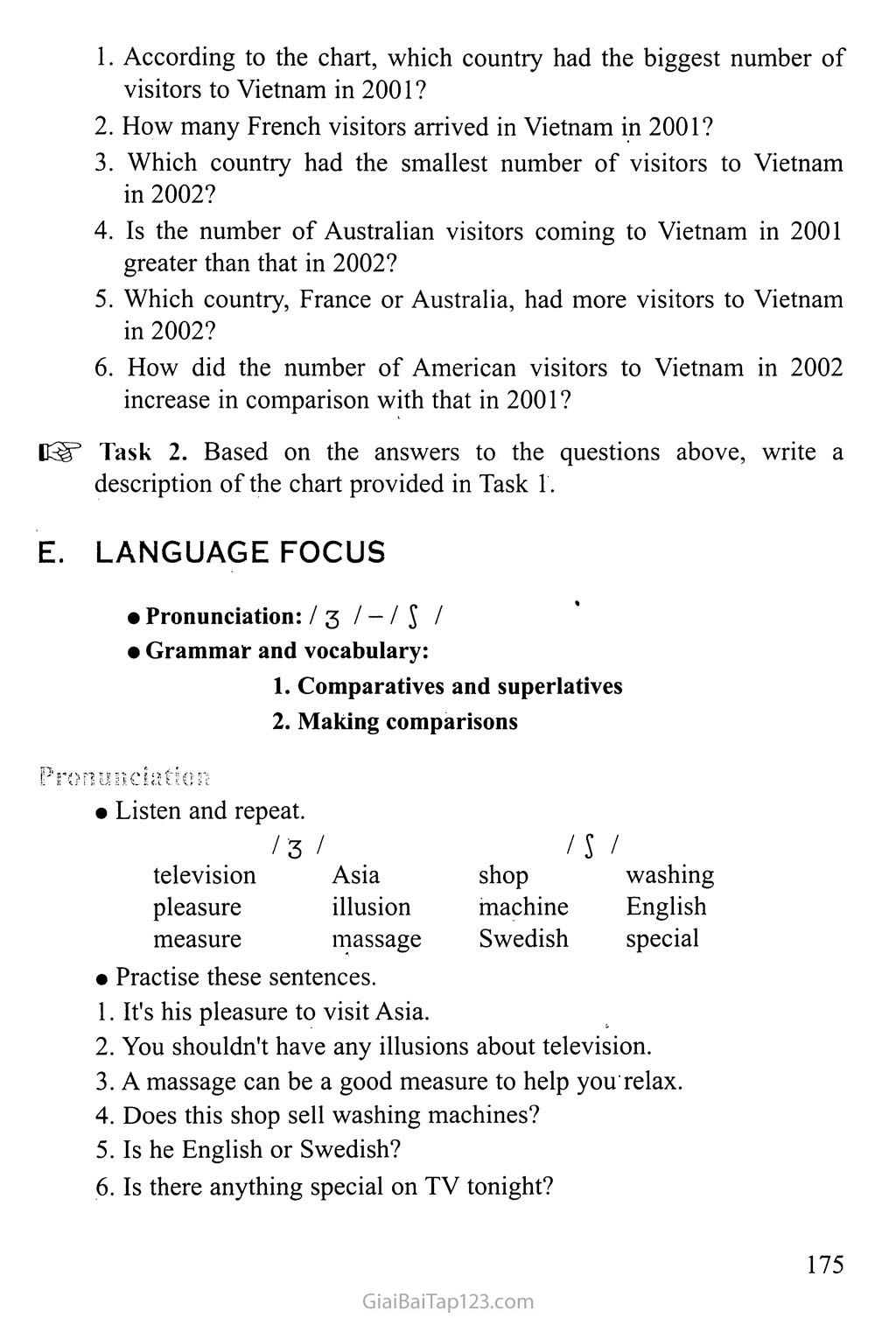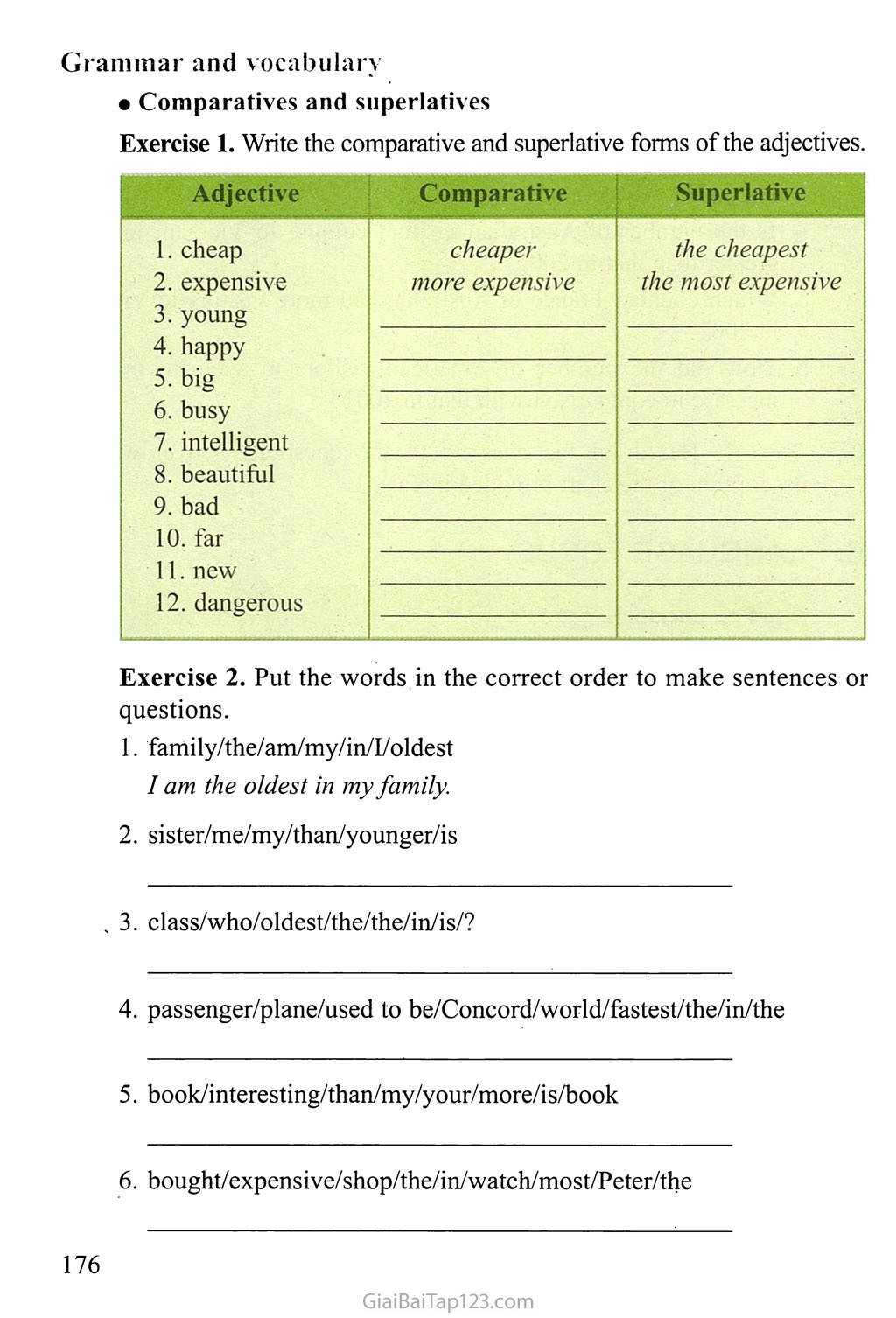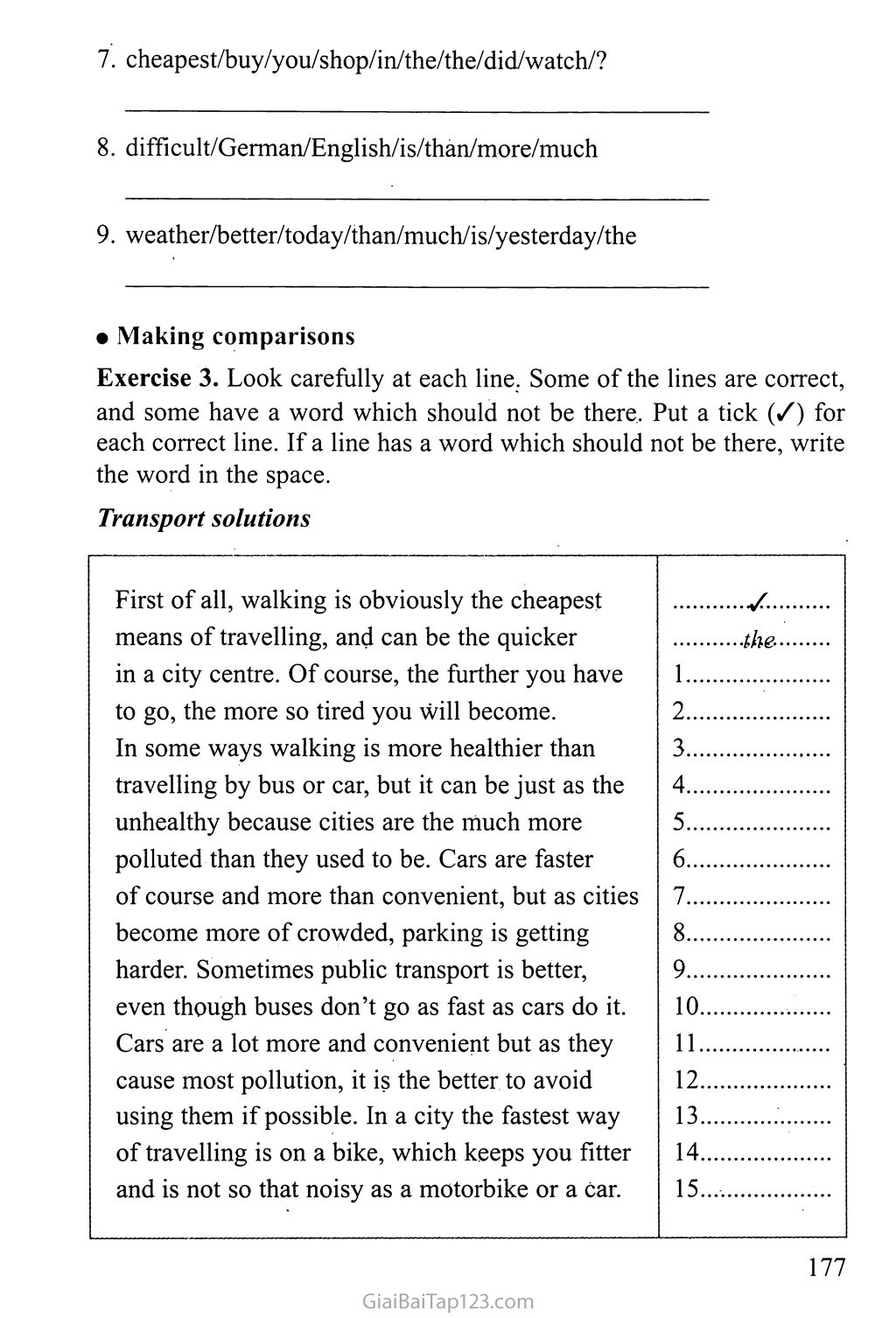SGK Tiếng Anh 10 - Unit 16: HISTORICAL PLACES
/6 HISTORICAL PLACES A. READING Before you read Work in pairs. List some historical places you know in Vietnam. Is Van Mieu - Quoc Tu Giam a historical place? What do you know about this place? While you read Read the passage and then do the tasks that follow. Van Mieu - Quoc Tu Giam is a famous historical and cultural site in Hanoi. Originally built in 1070 in the Ly dynasty, Van Mieu was representative of Confucian ways of thought and behaviour. Six years later, Quoc Tu Giam, the first university of Vietnam, was established on the grounds of Van Mieu. Between 1076 and 1779, Quoc Tu Giam educated thousands of talented men for the country. In 1482, Van Mieu became a place to memorialize the most brilliant scholars of the nation. The names, places of birth and achievements of top students in royal examinations were engraved on stone stelae. These stelae, carried on the backs of giant tortoises, are still standing today and they attract great interest from visitors. After more than 900 years of existence, Van Mieu is an example of well-preserved traditional Vietnamese architecture. The banyan trees in Van Mieu, which witnessed festivals and examinations during feudal times, continue to flourish. Van Mieu - Quoc Tu Giam is a site of national pride for Vietnamese people. Kẫr Task 1. Choose A, B, or c that best suits the meaning of the italicised word. Van Mieu was originally built in 1070 in the Ly dynasty. A. beautifully B. initially c. finally It is representative of Confucian ways of thought and behaviour. A. typical B. fond c. traditional Van Mieu was a place to memorialize the most brilliant scholars of the nation. A. ignore B. gather c. honor The stone stelae were engraved with the names of the top students in royal examinations. A. printed B. carved c. washed The banyan trees in Van Mieu continue to flourish even now. A. slow down B. fall off c. grow well Task 2. Decide whether the following statements are true (T) or false (F). T F The construction of Van Mieu took place After you read Work in groups. Talk about Van Mieu - Quoc Tu Giam, using the suggestions below. Why is Van Mieu - Quoc Tu Giam a place of interest? When and where were they built? What were their functions? What is special about the stelae there? B. SPEAKING Kễ3 Task 1. A foreign visitor has taken some notes about President Ho Chi Minh's Mausoleum. Ask and answer questions with a partner, using his notes. Example: A: Where is President Ho Chỉ Minh's Mausoleum situated? B: It is situated in Ba Dinh District in Hanoi. A: When did the construction of the Mausoleum start? B: It started in September 1973. PRESIDENT HO CHI MINH’S MAUSOLEUM Place: Ba Dinh District, Hanoi Built in September 1973, completed in August 1975 1st floor: a stand for important meetings organised at Ba Dinh Square, 2nd floor: where the late president is lying, 3rd floor: the roof Visiting hours: 7:30 - 10:30 a.m. in summer and 8:00 - 11:00 a.m. in winter. Every day except Monday and Friday. Usually closed September 5 - December 10 for maintenance No photography allowed inside 12-TIENGANH10-A 169 Háẵ3 Task 2. Work in pairs. Take turns to act as a tourist guide and give a short introduction to either of the historical places below, using the information given. HUE IMPERIAL CITY Listed as a World Cultural Heritage by UNESCO in 1993 In Hue City, 654 km from Hanoi and 1071 km from Ho Chi Minh City Construction: started 1805 and completed 1832 Comprises 3 sections: the Royal Citadel, the Imperial Enclosure and the Forbidden City Open daily from 8:00 a.m. to 4:30 p.m. Admission fee: 55,000 VND s ■»* THONG NHAT CONFERENCE HALL Also called Reunification Hall or Independence Palace In District No 1, Ho Chi Minh City, 1,730 km south of Hanoi Originally built in 1865 and heavily damaged by an air bombardment in February 1963 Rebuilt and construction completed in 1966 Has 5 floors with 100 beautifully decorated rooms and chambers Open daily from 7:30 to 11:00 a.m. and from 1:00 to 4:00 p.m. Admission fee: 10,000 VND ciu' Task 3. Work in groups. Ask other members of the group questions about a historical place they have been to or know about, note down the main information, and then report to the class what you have learnt about that place. c. LISTENING Before you listen Work in pairs. Look at the pictures then answer the following questions. What are the names of the places? Which of the places have you been to? Which one would you like to visit most? Why? • Listen and repeat, merchant pillar carved destination vessel ornamental Assembly Hall of Cantonese Chinese Congregation Tan Ky House Japanese Covered Bridge heritage certified While you listen KIT Task 1. Listen and choose A, B, or c that best completes the sentence. Hoi An is located kilometres south of Da Nang. 13 30 c. 16 Hoi An used to be an important trading centre . in Southeast Asia in the 19th century c. in the Far East Hoi An is well-known for its old houses which are . small and thatch-roofed narrow and carved c. small and tile-roofed The Japanese Covered Bridge was built ' . in 1855 in the 18th century c. in the 16th century Tan Ky House was built as a . house for a Chinese merchant meeting hall for the Cantonese Chinese c. house for a Vietnamese merchant BdsT Task 2. Listen again and answer the following questions. Where is the ancient town of Hoi An situated? What was Hoi An known as between the 16th and the 17th centuries? What is it now famous for? What are the old houses in Hoi An like? How old is the Assembly Hall of Cantonese Chinese Congregation? When was Tan Ky House built? What is special about this house? When was Hoi An recognised by UNESCO as a World Cultural Heritage Site? After you listen Work in groups. Talk about the ancient town of Hoi An, using the following cues. its location and roles in the past its attractive characteristics at present its main tourist attractions and their features Đ. WRITING Describing a chart EdgC Task 1. The chart on the right presents some information about visitor arrivals in Vietnam from the USA, France and Australia in 2001 and 2002. Study the chart and then answer the questions that follow. VISITOR ARRIVALS IN VIETNAM (From the USA, France and Australia) 2001 2002 (Source: Vietnam National Administration, 2002) According to the chart, which country had the biggest number of visitors to Vietnam in 2001 ? How many French visitors arrived in Vietnam in 2001? Which country had the smallest number of visitors to Vietnam in 2002? Is the number of Australian visitors coming to Vietnam in 2001 greater than that in 2002? Which country, France or Australia, had more visitors to Vietnam in 2002? How did the number of American visitors to Vietnam in 2002 increase in comparison with that in 2001? IW Task 2. Based on the answers to the questions above, write a description of the chart provided in Task 1. E. LANGUAGE FOCUS Pronunciation: / 3 / - / s / Grammar and vocabulary: Comparatives and superlatives Making comparisons Pronunciation , • Listen and repeat. / '3 / / s / television Asia shop washing pleasure illusion machine English measure massage Swedish special • Practise these sentences. It's his pleasure to visit Asia. You shouldn't have any illusions about television. A massage can be a good measure to help you relax. Does this shop sell washing machines? Is he English or Swedish? Is there anything special on TV tonight? Grammar and vocabulary • Comparatives and superlatives Exercise 1. Write the comparative and superlative forms of the adjectives. Adjective Comparative Superlative cheap expensive young cheaper more expensive the cheapest the most expensive 4.happy 5. big 6. busy 7. intelligent 8. beautiful 9. bad 10. far 11. new 12. dangerous Exercise 2. Put the words in the correct order to make sentences or questions. family/the/am/my/in/I/oldest I am the oldest in my family. sister/me/my/than/younger/is , 3. class/who/oldest/the/the/in/is/? passenger/plane/used to be/Concord/world/fastest/the/in/the book/interesting/than/my/your/more/is/book bought/expensive/shop/the/in/watch/most/Peter/the cheapest/buy/you/shop/in/the/the/di d/watch/? difficult/German/English/is/than/more/much weather/better/today/than/much/is/yesterday/the • Making comparisons Exercise 3. Look carefully at each line. Some of the lines are correct, and some have a word which should not be there. Put a tick (/) for each correct line. If a line has a word which should not be there, write the word in the space. Transport solutions First of all, walking is obviously the cheapest -Z means of travelling, and can be the quicker the- in a city centre. Of course, the further you have 1 to go, the more so tired you will become. 2 In some ways walking is more healthier than 3 travelling by bus or car, but it can be just as the 4 unhealthy because cities are the much more 5 polluted than they used to be. Cars are faster 6 of course and more than convenient, but as cities 7 become more of crowded, parking is getting 8 harder. Sometimes public transport is better, 9 even though buses don’t go as fast as cars do it. 10 Cars are a lot more and convenient but as they 11 cause most pollution, it is the better to avoid 12 using them if possible. In a city the fastest way 13 of travelling is on a bike, which keeps you fitter 14 and is not so that noisy as a motorbike or a car. 15...

